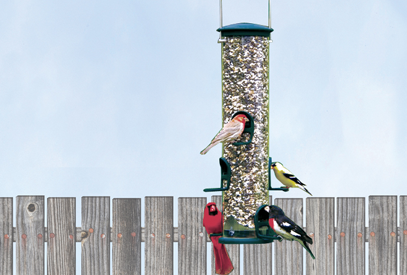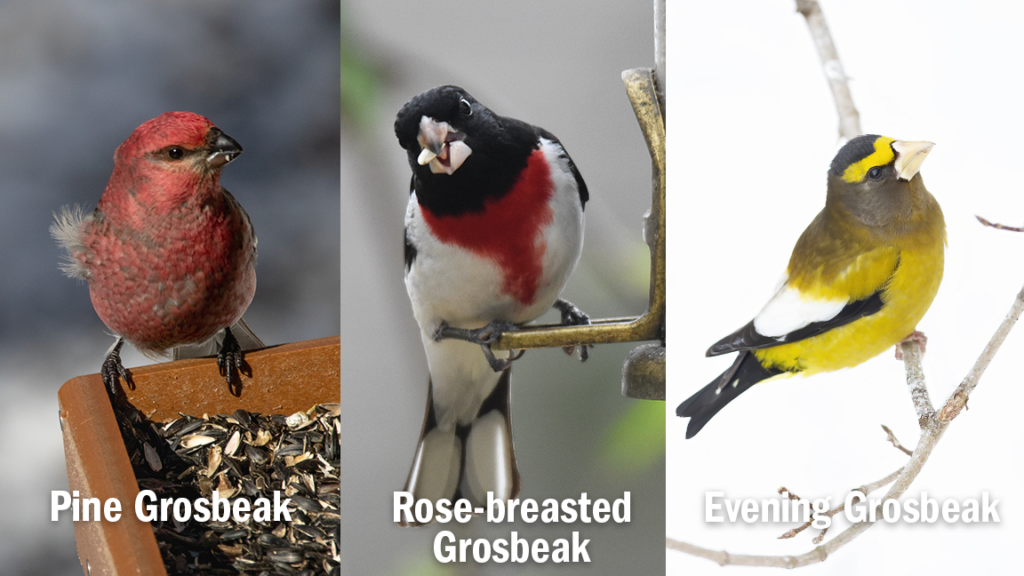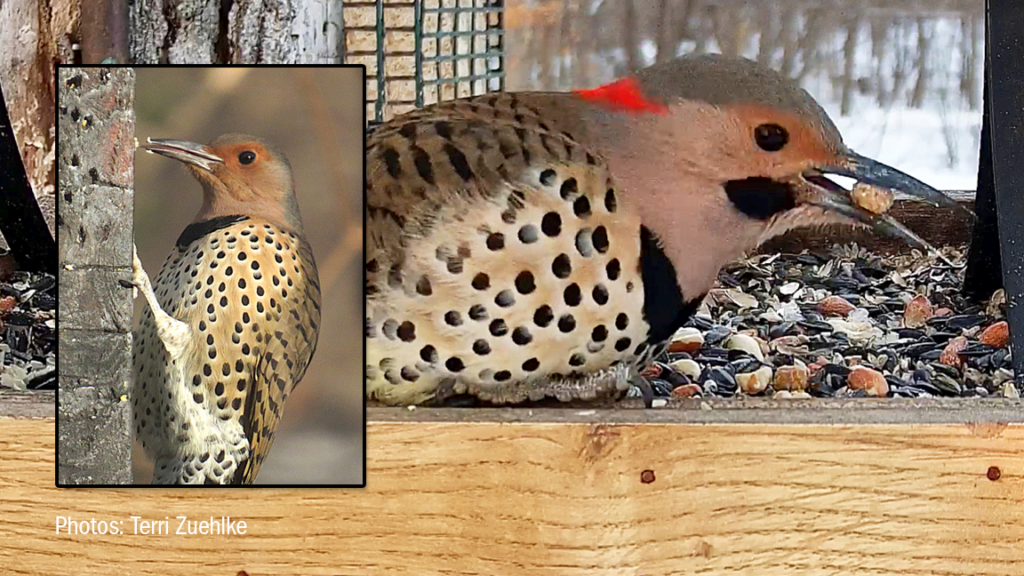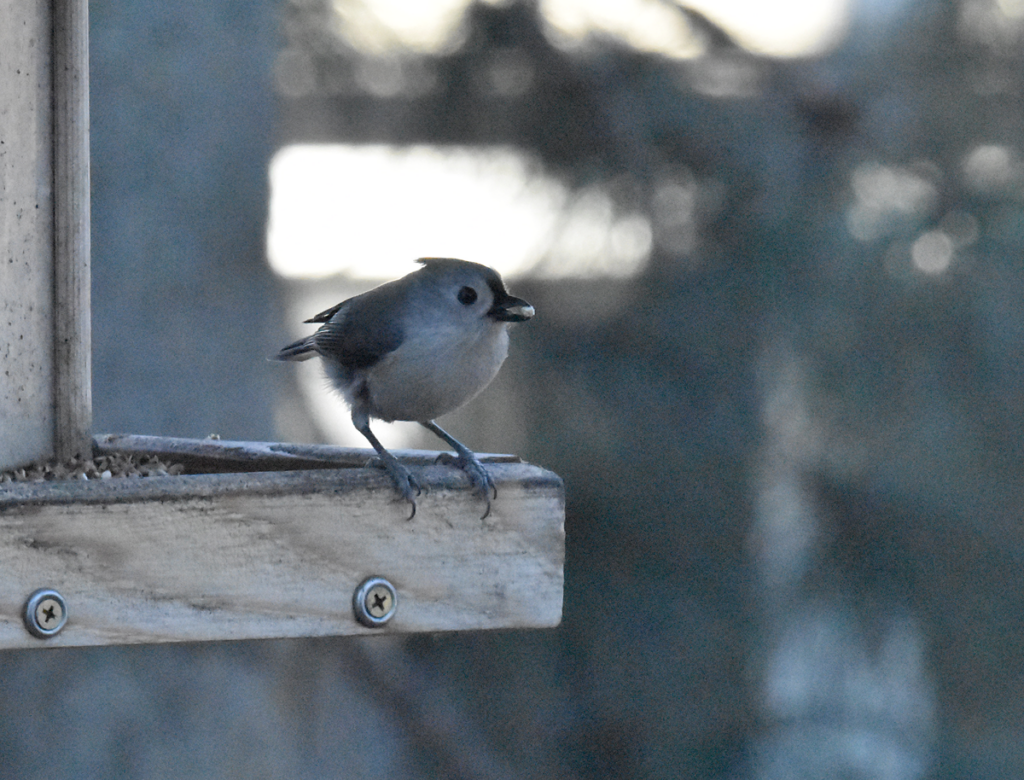We Minnesotans are so fortunate to live in a state rich in natural resources, wildlife diversity, and breathtakingly beautiful landscapes. The prairies of the west, the pines of the north, and the hardwoods of the south provide ideal habitat for so many bird species.

Many of our favorite birds overwinter in Minnesota, leaving our northern forests for better habitat conditions (readily available food) in the southern regions of the state. These birds include but are not limited to: Evening Grosbeaks, Northern Flickers, and Tufted Titmice. In fact, we are seeing an increase in these populations locally.
There is one major rule for attracting grosbeaks, flickers, and titmouse to our feeders- GO BIG OR GO HOME.
These birds are attracted to LARGE, OPEN feeders such as platforms, and fly-throughs. They will frequent SUBSTANTIAL hopper feeders, and large tube feeders as well.
We carry American-made Aspects Big Tube seed feeders (shown), and Birds Choice platform feeders, and fly-thru feeders made from 95% recycled plastic.
Rose-breasted, Evening, and Pine Grosbeaks
Grosbeaks are named for their large, chunky beaks. Grosbeak comes from the Latin words “gros” and “beccus” meaning large beaks. Rose-breasted and Blue Grosbeaks are summer (breeding) visitors to the state. Evening Grosbeaks are permanent residents in Minnesota, primarily in the north and northeast regions of the state. Pine Grosbeaks are regular winter visitors and migrants to Minnesota, especially in the north and northeast.
Grosbeaks will readily come in for black-oilers, sunflower hearts, roasted peanuts, dried mealworms, suet, and even bits of fruit i.e. crab apples, Hawthorn berries etc.
Grosbeaks drink water daily. Include a heated birdbath in your feeding station to bring in more birds.

Northern Flicker
The Northern Flicker is a beautiful, brownish-yellow bird with a dark “V” shaped bar on its chest, and dark spots on its belly. Males have a red moustache. The Northern Flicker is a bottom-heavy bird, which means it prefers a feeder that better supports it weight i.e. suet feeders with tail props and large, open tray feeders.
Northern Flickers are largely insects eating birds. They are attracted to suet, fruit and berries, nuts, black oilers, and sunflower hearts. They prefer large platform feeders, ground feeders, and tray feeders.

Tufted Titmouse
Tufted Titmice behave much like our busy, little Black-capped Chickadees. They come in for black oilers, sunflower hearts, and roasted peanuts, as well as suet. They cache or hoard their food under loose bark.
They are acrobatic foragers who cling to feeders. They are known to frequent large hopper feeders, platform feeders, tube feeders and Nyjer® socks. They may use tree cavities for winter roosting.

By Eagan Store Manager ANN MCCARTHY

